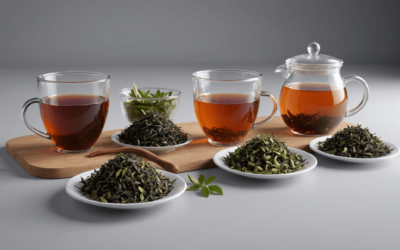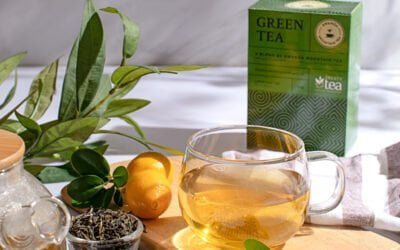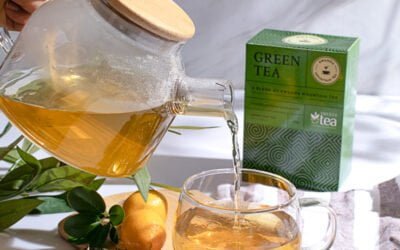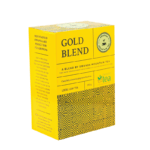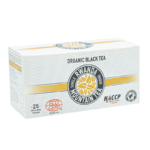Understanding Tea Processing Fundamentals
Before exploring the specific methods, it’s important to understand that all genuine tea—black, green, white, oolong, and puerh—comes from the same plant: Camellia sinensis. The differences in tea types emerge primarily from the processing methods applied after harvesting.
Tea processing typically involves several key stages:
- Plucking
- Withering
- Rolling/disrupting leaf structure
- Oxidation (varies by tea type)
- Firing/drying
How these steps are implemented—and which are included or omitted—determines the final character of the tea. Rwanda Mountain Tea Ltd (RMT) employs various processing techniques across its product range, combining traditional knowledge with modern innovations.
Orthodox Tea Processing: Tradition and Artistry
What Defines Orthodox Processing?
Orthodox processing refers to traditional methods that prioritize leaf integrity and careful handling to preserve the tea’s natural qualities. This approach typically yields higher quality teas with more complex flavor profiles.
The Orthodox Process in Detail
At Rwanda Mountain Tea’s facilities, orthodox processing follows these carefully controlled steps:
1. Selective Plucking
The process begins with harvesting only the finest parts of the tea plant—typically “two leaves and a bud.” This selective plucking, performed primarily by RMT’s skilled workforce (approximately 30,000 workers, two-thirds being women), ensures only the most flavor-rich portions enter production.
2. Withering
Freshly harvested leaves are spread thinly on withering troughs where they gradually lose moisture over 12-18 hours. This critical phase allows:
- Moisture reduction (30-40%)
- Development of aromatic compounds
- Preparation of leaf cells for subsequent processing
3. Rolling
Traditional rolling machines or hand-rolling techniques apply pressure to the withered leaves, breaking cell walls to:
- Release essential oils
- Activate enzymes
- Initiate oxidation
- Shape the leaves
The rolling process at RMT preserves the integrity of the larger leaf pieces, which contributes to the distinctive character of their orthodox teas.
4. Oxidation (for black teas)
For RMT’s premium black teas (graded as BP, BP1, BMPD, PF, PF1, etc.), the rolled leaves undergo controlled oxidation in rooms where temperature and humidity are carefully monitored. During this phase:
- Enzymes interact with polyphenols
- Leaves change from green to copper-brown
- Complex flavor compounds develop
- Distinctive aroma profiles emerge
5. Firing
A precise drying process that:
- Halts oxidation at exactly the right moment
- Reduces moisture content to 2-3%
- Stabilizes the tea for storage
- Locks in developed flavors
Orthodox Processing for Different Tea Types
RMT produces several tea types using variations of orthodox processing:
Orthodox Black Tea The full process described above results in RMT’s distinctive black teas with grades like OP, OP1, FOP, BOP1, FBOP1, etc.
Orthodox Green Tea For green varieties like PEKOE and OP, the withered leaves bypass oxidation through immediate heating (steaming or pan-firing) to deactivate oxidative enzymes before rolling and drying.
Specialty Orthodox Teas RMT’s planned specialty teas—white tea, pan-fired green tea, and pearl tea—will employ further variations of orthodox processing with additional steps for creating these premium products.
Organic Tea Production: Sustainable Cultivation and Processing
What Makes Tea “Organic”?
Organic tea production focuses on sustainable agricultural practices throughout the entire growing and processing cycle. The term “organic” primarily addresses how the tea is cultivated rather than specific processing techniques, though processing must also adhere to organic standards.
Organic Cultivation Practices at RMT
Rwanda Mountain Tea’s organic products (including both black and green varieties) adhere to strict standards:
1. Natural Fertilization
- Compost and natural amendments
- No synthetic fertilizers
- Cover cropping and mulching
- Biodiversity promotion
2. Natural Pest Management
- Beneficial insect introduction
- Companion planting
- Physical barriers
- Plant-based repellents
3. Soil Conservation
- Erosion control techniques
- Cover crops to protect soil
- Maintenance of soil biology
- No synthetic herbicides
4. Buffer Zones
- Protection from neighboring non-organic areas
- Natural watershed protection
- Biodiversity enhancement
Certification and Standards
RMT’s organic teas meet rigorous certification requirements, including:
- ECOCERT
- European Organic Standard (EOS)
- USDA National Organic Program (NOP)
- Rainforest Alliance
These certifications require regular inspections and documentation of all inputs and processes.
Key Differences: Organic vs. Orthodox
Understanding the relationship between organic and orthodox approaches is crucial:
Complementary, Not Mutually Exclusive
Important distinction: Organic refers primarily to cultivation methods, while orthodox refers to processing techniques. These approaches can and often do overlap:
- Organic Orthodox Tea: Tea that is both organically grown and processed using traditional orthodox methods (like many of RMT’s premium products)
- Conventional Orthodox Tea: Tea processed using traditional methods but grown with conventional agricultural inputs
- Organic CTC Tea: Tea grown organically but processed using non-orthodox methods (Cut, Tear, Curl)
Flavor Profile Differences
Orthodox Processing Impact on Flavor
- Preserves leaf integrity
- Maintains complex flavor compounds
- Creates teas with nuanced “high notes” and subtle flavors
- Produces distinctive visual appearance
Organic Cultivation Impact on Flavor
- Often produces more distinctive terroir characteristics
- May have slightly lower yield but higher flavor intensity
- Creates cleaner, more authentic taste profile
- Avoids chemical notes that can result from synthetic inputs
Environmental and Social Considerations
Orthodox Processing Benefits
- Often employs more workers (supporting local economies)
- Usually requires less energy than industrial methods
- Preserves traditional knowledge and techniques
- Creates higher-value products that support sustainable economics
Organic Production Benefits
- Eliminates chemical runoff into local watersheds
- Improves soil health and carbon sequestration
- Protects worker health by eliminating exposure to agricultural chemicals
- Promotes biodiversity in tea-growing regions
Rwanda Mountain Tea’s Approach: The Best of Both Worlds
Rwanda Mountain Tea Ltd exemplifies how organic cultivation and orthodox processing can combine to create exceptional products:
Integrated Sustainable Production
RMT’s approach integrates:
- Organic certification for many tea gardens
- Traditional orthodox processing
- Modern quality control
- Community support initiatives
This holistic approach creates teas that are both environmentally responsible and exceptionally high-quality.
Premium Product Categories
RMT’s product range showcases various combinations of organic cultivation and orthodox processing:
- Organic Teas
- Organic Black Tea (Orthodox processed)
- Organic Green Tea (Orthodox processed)
- Classic Teas
- Gold Blend (Orthodox processed)
- Green Tea (Orthodox processed)
- Mild Blend (Orthodox processed)
- Strong Blend (Orthodox processed)
- Flavored Teas
- Tangawizi Tea (ginger milk tea)
- Ginger and Lemon Tea
- Lemongrass Tea
- Chamomile Tea
- Peppermint Tea
Each category demonstrates RMT’s commitment to quality through appropriate processing methods.
Future Innovations: Expanding Processing Capabilities
As noted in RMT’s future plans, the company aims to introduce specialty teas including white tea, pan-fired green tea, pearl tea, and matcha. These innovations will expand RMT’s orthodox processing capabilities while maintaining their commitment to organic practices where possible.
According to tea industry experts at the World Tea Academy, the combination of high-altitude growing conditions, organic cultivation, and orthodox processing positions Rwanda for success in premium tea markets: “High-elevation organic teas processed using orthodox methods represent the fastest-growing segment of the specialty tea market globally.”
Making the Right Choice for Your Tea
When selecting tea, understanding these distinctions helps you make informed choices:
When to Choose Orthodox Teas
- When seeking complex flavor profiles
- For traditional tea experiences
- When leaf appearance and brewing aesthetics matter
- For specialized brewing methods
When to Choose Organic Teas
- To avoid agricultural chemical residues
- To support sustainable farming practices
- To promote biodiversity in tea regions
- For potentially more distinctive terroir expression
The Ideal: Organic Orthodox Tea
For the best of both worlds, look for teas like RMT’s organic orthodox varieties that combine:
- Sustainable growing practices
- Traditional processing methods
- Certification for quality assurance
- Support for tea-growing communities
Experience the Difference
Ready to taste the difference these processing methods make? Explore our complete tea collection or learn about visiting our tea gardens and processing facilities to witness firsthand how Rwanda Mountain Tea combines the best of organic cultivation with orthodox processing expertise.


